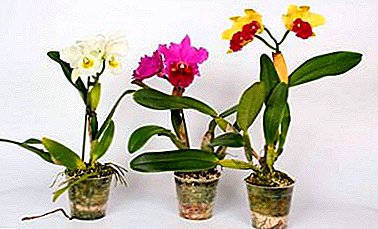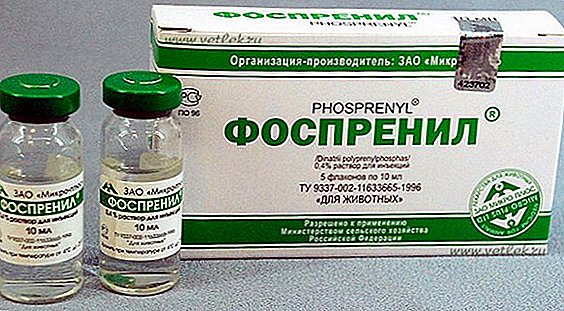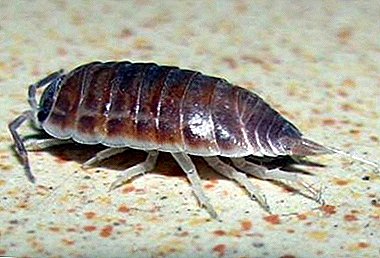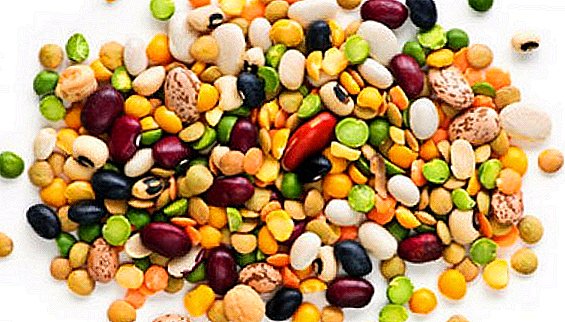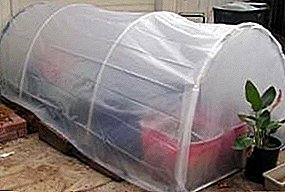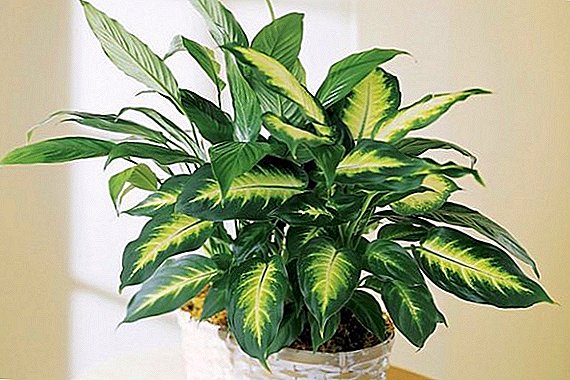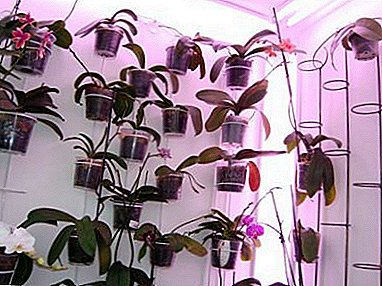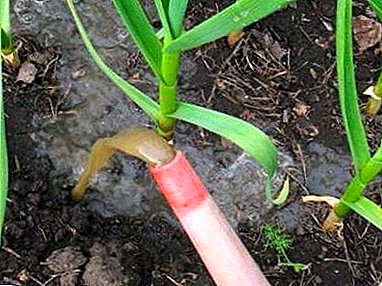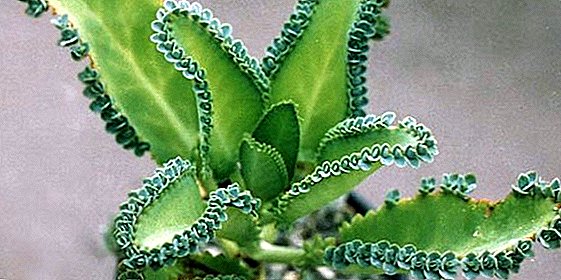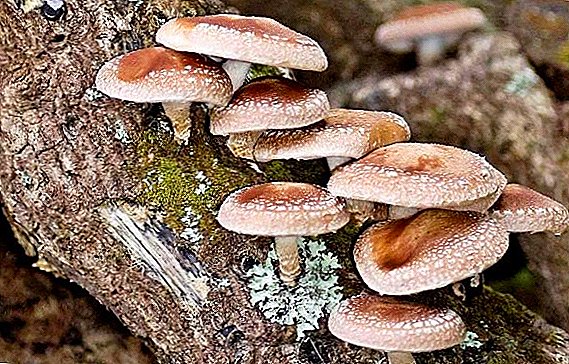 Shiitake mushrooms have excellent taste properties, as well as a beneficial effect on health with proper product quality.
Shiitake mushrooms have excellent taste properties, as well as a beneficial effect on health with proper product quality.
To obtain the most useful and high-quality mushrooms of this species, it is necessary to carefully and thoughtfully approach the issues of their cultivation.
Shiitake mushroom
Shiitake is considered one of the most popular mushroom crops in the world, not only because of its active use in medical practice, but also because of its excellent nutritional characteristics. This mushroom culture is great for preparing mouth-watering dishes and even drinks.
The mushroom has a brown cap with a diameter of 4 to 22 cm with a unique embossed pattern. Shiitake has a fibrous stem, and the young representatives of this organism are also endowed with a special stretch that protects the fruit parts during the period of ripening spores. When the spores are ready, the membrane breaks and remains in the form of "hanging tissue" on the cap.  Chinese emperors drank a special decoction of these mushrooms to prolong their youth, so in most Asian countries, shiitake is referred to as an "imperial mushroom." The homeland of this organism is the forests of China and Japan, where the culture propagates on the trunks of hardwood trees.
Chinese emperors drank a special decoction of these mushrooms to prolong their youth, so in most Asian countries, shiitake is referred to as an "imperial mushroom." The homeland of this organism is the forests of China and Japan, where the culture propagates on the trunks of hardwood trees.
You will be interested to know what mushrooms grow on trees and stumps.
The caloric content of this product is relatively low - 34 kcal per 100 grams of wet weight. The exception are dried shiitake, as their caloric content is about 300 kcal per 100 grams.
From the point of view of nutritional value, this representative of mushrooms is a real find, because it contains a large amount of zinc, complex carbohydrates, an almost complete list of amino acids, as well as leucine and lysine in sufficient quantities. With the help of consumption of shiitake, you can lower the level of cholesterol in the body, as well as reduce blood sugar levels and overcome allergies.  Also, the consumption of this organism in a dried form can help in the treatment of cardiovascular diseases or disorders of the liver.
Also, the consumption of this organism in a dried form can help in the treatment of cardiovascular diseases or disorders of the liver.
Did you know? Spores of fungi can wait for a good opportunity for germination for decades. In this case, the necessary climatic conditions can comprehend the dispute in the most unexpected places: on a bump, bag of grain, a wall or another place.
The product also has some hazardous properties. For example, people who have a tendency to allergic diseases, should be treated very carefully to the consumption of shiitake. Also, do not eat this fungus during lactation and pregnancy (the product includes a large number of biologically active substances).
Shiitake growing methods
This species of organisms belongs to the class of saprotroph fungi, which actively grow on parts of dying wood when the necessary environmental conditions arise.  Mushroom growers mark one striking feature of the cultivation of this organism - a relatively slow maturation of mycelium, as well as poor competitive qualities in the struggle for survival in the wild (when compared with colonies of mold and bacteria).
Mushroom growers mark one striking feature of the cultivation of this organism - a relatively slow maturation of mycelium, as well as poor competitive qualities in the struggle for survival in the wild (when compared with colonies of mold and bacteria).
Read about what mycelium is and how to grow it at home.
But with the observance of all the necessary growing procedures and maintaining complete sterility at all stages, it is possible to obtain a sufficiently large crop with minimal effort.
There are two main ways of cultivating shiitake mushrooms: extensive and intensive.
Extensive method
It is based on the maximum copying of the natural processes of fungus germination on wood. For this purpose, trunks of suitable tree species are harvested and sterilized and in a special way they infect the myitlium of the shiitake fungus. This method will bring the most positive results in regions with a suitable climate (temperature and humidity levels).
The highest level of fruiting is observed in the second year of the introduction of mycelium into wood raw material. Now about 70% of world production of shiitake mushrooms is based on this method. 
Intensive method
It is based on the use of a specially prepared substrate from chips, sawdust of deciduous trees, straw of cereals with the addition of grain, bran, hay or mineral additives. This mixture must be properly sterilized or pasteurized, after which the fungus mycelium must be added to the substrate. After some time, complete colonization of the blocks occurs and the mushroom grower receives the first fruits.
Intensive method
Mycelium for the cultivation of shiitake intensive method is manufactured and sold on a specialized market in two main types:
- sawdust - Mycelium dilution occurs on sawdust-bran mixture. This substance is perfect for breeding mushrooms in a homogeneous substrate. The normal ratio of mycelium and sawdust substrate for intense maturation of shiitake is 5-7% of the mycelium of the substrate mass.
- grain - is a placer of grain, in which the spores of the fungus developed. Also, the grain serves as an excellent nutrient medium to accelerate the formation of high-quality mycelium. For effective breeding of shiitake by this type of mycelium, you need to add 2% of infected grain from the mass of the substrate.
 Experts in the field of mushroom cultivation recommend the use of cereal mycelium, since such planting will preserve the maximum number of genetic characteristics of the organism, and any negative properties of the product can be better seen on such a grain substrate.
Experts in the field of mushroom cultivation recommend the use of cereal mycelium, since such planting will preserve the maximum number of genetic characteristics of the organism, and any negative properties of the product can be better seen on such a grain substrate.Important! Since ancient times, effective antiparasitic properties of the shiitake fungus have been known, from which a variety of infections and even helminths were healed.
The best solution is to purchase a package of mycelium, weighing 18 kg, of a grain type, and its further packaging in plastic bags with a special latch (200 grams). Packaging must take place in a clean room without ventilation. You will also need a table and a basin cleaned with a rag moistened in a solution of whiteness. The procedure for the distribution of mycelium should be carried out in several stages:
- Stage 1 - extraction of part of the substrate in the pelvis. His division into separate grains;
- Stage 2 - backfilling of mycelium in 200-gram portions in bags with snaps;
- Stage 3 - production of a kind of air filter from toilet paper (the addition of a multi-layered square with a dimension of 30 × 30 mm);
- Stage 4 - equipment bags with mycelium filter (insert the bag into the latch, and close the remaining space with the latch);
- 5 stage - fastening the top of the bags with a stapler with further sticking it to the bag with adhesive tape.
 Such a billet can be stored upright (with the filter up) in a domestic refrigerator for up to 6 months, and is also quite convenient for inoculation (contamination of the substrate with grain mycelium).
Such a billet can be stored upright (with the filter up) in a domestic refrigerator for up to 6 months, and is also quite convenient for inoculation (contamination of the substrate with grain mycelium).Preparation of mushroom blocks
The most appropriate capacity for the cultivation of shiitake plastic bags are considered to be a standard form, as well as a permissible volume of 1 to 6 liters. The main material for the manufacture of such a package must be polypropylene or high density polyethylene (so that the prepared block can withstand considerable temperature loads during the sterilization process of the substrate).
Important! Re-sterilization can trigger negative processes in the substrate, which will create a toxic environment in relation to shiitake mycelium. Therefore, it is important to closely monitor the operation parameters of the sterilizer and the time of the operation.
Packages that do not have filters equipped must be closed with a cotton-gauze plug with a ring (must be made of heat-resistant material and have a diameter in the range of 40-60 mm). On sale there are also special packages for growing mushrooms. A feature of these products is the presence of special microporous filters.  Therefore, after filling the prepared container with the substrate, the bag is sealed tightly and gas exchange takes place exclusively through these filters, and the need for a ring and cork is completely eliminated.
Therefore, after filling the prepared container with the substrate, the bag is sealed tightly and gas exchange takes place exclusively through these filters, and the need for a ring and cork is completely eliminated.
Before seeding mycelium into such blocks, it is necessary to thoroughly sterilize the substrate prepared in advance. There are two main ways to perform this operation:
- packing unsterilized substrate in bags (formation of blocks) with further sterilization. Such a process requires the use of an autoclave, where the blocks with the substrate are placed (parameters for the autoclave: vapor pressure - 1-2 atm., Temperature - 120-126 ° C). The procedure will require relatively little time - 2-3 hours.
- sterilization of the substrate prior to packing in bags (blocks). To sterilize the substrate using this method, you will need a clean 200-liter barrel (installed above the fire on solid heat-resistant supports), into which the substrate must be poured, filled with boiling water and boiled on the fire for several hours (4-5). Next, the substrate must be removed in a clean container and allow to cool. After these procedures, you need to pack the sterilized mixture in bags. It should be noted that with the use of such a sterilization method, conventional plastic bags can be used as a container for creating blocks under the substrate with the installation of the above-described filter components.
 Packing the substrate in bags
Packing the substrate in bagsSubstrate Preparation
When using the intensive method of cultivation of fungi to create a substrate, buckwheat husks, grape or apple residues, straw, rice bran, sawdust and bark of deciduous trees, as well as flax or sunflower husk can be used.
Important! The components of coniferous tree species cannot be used to create a plant mixture, because they consist of a large amount of resin and phenolic substances, which negatively affects the development of mycelium.
55-90% of the mass of the mixture for the cultivation of shiitake mushrooms should take the sawdust size of 3-4 mm. Smaller components can harm the process of gas exchange, which will slow the growth of fungi. It is recommended to add wood chips and chips to the substrate to form an aerated mixture structure.  Many mushroom growers are actively using cereal straw as one of the components of the substrate for shiitake. This element will benefit in the process of growing mushrooms only if the straw meets the following requirements:
Many mushroom growers are actively using cereal straw as one of the components of the substrate for shiitake. This element will benefit in the process of growing mushrooms only if the straw meets the following requirements:
- straw should be collected in warm weather with low air humidity (preferably at the same time as harvesting);
- Straw growth should be environmentally friendly;
- the amount of straw should correspond to the biennial suitability, since after one year of conservation, straw increases the content of useful elements (nitrogen) by half, and is also easier to grind.
Consider all the subtleties of growing mushrooms such as oyster mushrooms, wild mushrooms, champignons, black truffle at home.
An important function in the substrate is performed by useful impurities, which are responsible for regulating the level of nitrogen in the mixture, providing the desired pH level, accelerating the development of the mycelium, as well as reducing the density of the mixture. Nutritional components should be from 2% to 10% of the total mass of the substrate.
These impurities include grain, wheat or other cereal bran, soy flour, various food waste, as well as chalk and gypsum.  Substrate mixtures for the cultivation of shiitake mushrooms are distinguished by a great variety. The most popular and effective substrates are the following:
Substrate mixtures for the cultivation of shiitake mushrooms are distinguished by a great variety. The most popular and effective substrates are the following:
- 41 kg of sawdust recommended tree species with 8 kg of cereal bran. Also with the addition of 25 liters of water and 1 kg of sugar;
- bark and sawdust (ratio 1: 1 or 1: 2 by weight);
- bark, sawdust and straw substrate (1: 1: 1);
- rice residues and sawdust (4: 1).
Did you know? In 2003, a mushroom was found inside a working atomic reactor in Japan by a special research robot.
Useful is the enrichment of the substrate of the bark and sawdust flour from corn or soy.  The process of preparing the substrate for inoculation consists of three successive stages:
The process of preparing the substrate for inoculation consists of three successive stages:
- Grinding. Allows you to make the mixture more compact, which favorably affects the spread of mycelium (large areas of voids mycelium is very difficult to overcome). Also, the grinding process is of strategic importance when using fresh straw. At home, straw enough to grind up to 5-10 cm.
- Mixing. An important enough stage for the formation of high-quality substrate. This measure will show the greatest efficiency with a relatively homogeneous composition of each of the added components.
- Treatment. This stage ensures the creation of free living space for the fruitful components of shiitake, as in an aggressive environment it is inferior in viability to the main colonies of mold and bacteria. The processing of the substrate occurs through sterilization or pasteurization and is directly related to the formation of mushroom blocks. Therefore, the sterilization procedure is described in detail above.
 Substrate Preparation
Substrate PreparationInoculation
This procedure is considered the most responsible, therefore, it will require maximum concentration of attention and preparation. The main objective of this stage is the correct insertion of the shiitake mushroom mycelium into the prepared vegetable mixture. All actions must be carried out in sterile containers using a clean, disinfected set of tools.
Before direct inoculation, it is necessary to grind the acquired mycelium to individual grains, and also disinfect the bottles and packages with special solutions (70% alcohol or 10% sodium hypochlorite).
The procedure must be carried out extremely quickly: open the package, deposit the mycelium, close the package. The rate of mycelium is about 2-6% of the total substrate weight. It is necessary to introduce mycelium evenly in order to intensify the processes of maturation. The best solution is to prepare in advance in the substrate a kind of central channel and in the process of inoculation to determine the mycelium on it.  In addition to the grain mycelium, it is also possible to use a sawdust or liquid component. This mixture will show the best performance with homogeneous structural elements. The application rate of sawdust product is 6-7%.
In addition to the grain mycelium, it is also possible to use a sawdust or liquid component. This mixture will show the best performance with homogeneous structural elements. The application rate of sawdust product is 6-7%.
Liquid mycelium ripens on a special substance (for example, beer wort). The use of such a substance is possible only in conditions of exceptional sterility of the substrate. For liquid inoculation it is necessary to use a special dispenser. The rate is 20-45 ml per 2-4 kg of substrate.
When planning your “hunting” mushroom trails, find out which mushrooms are edible (growing in May and autumn) and poisonous, and also see how you can check mushrooms for edibility using popular methods.
Incubation
This period is characterized by the intensive development of the plant mixture by the fungus and the absorption of the necessary components for the formation of fruits. The optimum air temperature in the room for the maturation of the mycelium is 25 ° C. The blocks are installed on elevated surfaces (from 20 cm above the floor level) or suspended in the air for maximum flue gas discharge.  If the temperature of the environment in which the containers stay in the process of incubation exceeds 28 ° C, then the probability of death of the mycelium increases significantly due to the creation of the most favorable conditions for the active life of competitive organisms (for example, Trichoderma mold or neurospore).
If the temperature of the environment in which the containers stay in the process of incubation exceeds 28 ° C, then the probability of death of the mycelium increases significantly due to the creation of the most favorable conditions for the active life of competitive organisms (for example, Trichoderma mold or neurospore).
During the considered period, maturation should take place in closed containers, so the indicator of moisture does not matter much. Incubation can be carried out for 40-110 days, depending on the volume of the introduced mycelium, the composition of the substrate and the strain properties.
Did you know? There is a specific class of predator fungi. These organisms are able to set traps on the surface of a mycelium (rings that look like a sticky net). The stronger the victim is trying to break free, the faster the ring is tightened. The process of absorption of the unwary organism takes about 24 hours.
The process of colonization leads to a change in the color of the substrate (it becomes white). This is the stage of the white substrate, which is accompanied by the absorption of nutrients. After that, white bloatings are formed on the block.  The process of colonization of shiitake Next, the block begins to acquire a brown tint, which indicates the intensification of the ripening process. Most often, on the 40-60 day the whole block is brown. This is the phase of the "brown" block - the body is ready for fruiting. This color is formed due to the work of a special enzyme - polyphenol oxidase, which is activated with stronger light and the presence of oxygen.
The process of colonization of shiitake Next, the block begins to acquire a brown tint, which indicates the intensification of the ripening process. Most often, on the 40-60 day the whole block is brown. This is the phase of the "brown" block - the body is ready for fruiting. This color is formed due to the work of a special enzyme - polyphenol oxidase, which is activated with stronger light and the presence of oxygen.
Also on the surface of the substrate is formed a kind of protective layer of mycelium, which prevents microorganisms from entering the substrate and its drying. Therefore, during the incubation period, it is possible to illuminate formations of 7–9 hours (light - 50–120 lux), to accelerate the appearance of primordia. 
Fruiting and collecting
Fruiting is divided into several stages, each of which requires specific microclimate conditions:
- Stage 1 - induction of fruit formation. During this period, it is necessary to ensure the air temperature at a level of 15-19 ° C, to increase the room ventilation, as well as to ensure free light exposure for 8-11 hours a day.
- Stage 2 - fruit formation. Когда примордии начинают активные образовательные процессы, то становятся легко подверженными к любым негативным воздействиям микроклимата.It is necessary to maintain the temperature at a level of 21 ° C - for heat-loving strains or 16 ° C - for cold-loving (need to check with the seller of mycelium). The optimum humidity during the period of fruit formation is about 85%.
- Stage 3 - fruiting. During this period, the active creation of large single shiitake fruit formations takes place. The fungus formed protective cuticle, so the humidity can be reduced to 70%. After detecting the visual compliance of the fruit with the parameters of ripe mushrooms, it is necessary to make the first harvest. To do this, it is important to lower the humidity of the air, since the collected fruits in such conditions will be most well transported and stored.
- Stage 4 - transition period. During this period, the mycelium re-collects nutrients from the substrate. In order to speed up this process it is important to raise the temperature index to 19-27 ° С. It is also important to maintain a relatively low humidity of air - 50%, and carry out a thorough procedure to remove the residual maturation of the previous offspring. An important element in ensuring a good harvest of shiitake mushrooms is proper processing of blocks against possible pests and diseases. There are about 2-4 waves of ripening fruits from one package every two to three weeks after the previous harvest.

Extensive method
Extensive cultivation of shiitake keeps a confident leadership among the existing mechanisms, providing humanity with high-quality mushroom products for 65% of the total production.
This method is most common in regions where there is a relatively warm and humid climate, and the mushroom "gardens" are placed in places protected from direct sunlight and wind.
When creating a mushroom "garden" shiitake in the conditions of the household used bran tree deciduous trees. The wood must be healthy, clean, have a whole bark and a relatively large core. Humidity bran is also important. It should be at the level of 35-70%.
The best solution is to select trunks with a diameter of 10-20 cm and cut them into bran 100-150 cm. It is important to isolate these "natural substrates" from any contact with the ground or external contamination.  The instruction for growing shiitake mushrooms in an extensive way at home has the following form:
The instruction for growing shiitake mushrooms in an extensive way at home has the following form:
- It is necessary to place the cut on the prepared surface (table or trestle) for effective cutting and drilling holes. The holes should not have a large diameter (2-3 cm is enough). It is also important to control the depth of the holes at a level of 8-12 cm.
- After the holes are created, in the shortest possible time, these formations should be filled with sawdust or grain mycelium, clogged with wood components, and the holes should be sealed with wax or paraffin.
- At the next stage, it is advisable to place the bran in a room where it is possible to artificially provide a normal microclimate for the growth of ripening mushrooms - a temperature of 21-25 ° C and a humidity of 75-80%. If there is no access to the premises, then it is necessary to find a place in the forest or any other shelter from direct sunlight.
- Germination of mycelium occurs from six months to one and a half years. Check the cut for fruit shiitake can be by visual inspection of the cross-section (there should be white areas), and with a slight physical impact on the cut, it should not "ring";
 Create holes on the trunks To speed up the process of fruit ripening can be a few artificial ways. For example, to intensify the first wave of fruiting, it is necessary to dip cuttings with mycelium spots in available water sources into the water or water it with the help of special devices. In the warm season, this procedure should be carried out for 9-20 hours, in the cold - 1.5-3 days. The period of offspring is about 1-2 weeks, and the number of waves is limited to 2-3 or more.
Create holes on the trunks To speed up the process of fruit ripening can be a few artificial ways. For example, to intensify the first wave of fruiting, it is necessary to dip cuttings with mycelium spots in available water sources into the water or water it with the help of special devices. In the warm season, this procedure should be carried out for 9-20 hours, in the cold - 1.5-3 days. The period of offspring is about 1-2 weeks, and the number of waves is limited to 2-3 or more.It will be interesting to find out which mushrooms grow in central Russia, Krasnodar Krai, Bashkiria, Rostov, Kaliningrad, Volgograd, Leningrad and Voronezh regions.
Experts recommend to cover the bran between the waves of fruiting (during periods of rest) with special protective materials that must transmit light and air. The main objective of this action is to provide a stable temperature regime at elevated rates (temperature - 16-22 ° C), as well as to ensure humidity of 20-40%. After 1-3 months, the bran must be soaked in water again and set to activate the fruiting processes.  To predict the possible "yield" can be guided by the rule of experienced mushroom growers - the sum of all fruits should be about 17-22% of the mass of wood. And the very fruiting can last from 2 to 6 years.
To predict the possible "yield" can be guided by the rule of experienced mushroom growers - the sum of all fruits should be about 17-22% of the mass of wood. And the very fruiting can last from 2 to 6 years.
Shiitake mushroom cultivation is a very fascinating and informative process that will allow the most efficient use of waste wood processing industry. This mushroom culture will not only serve to increase the diversity of the diet, but also help to obtain the necessary nutrients for a good level of general body immunity and to maintain the liver, heart, and kidneys with a relatively small amount of time and effort.


